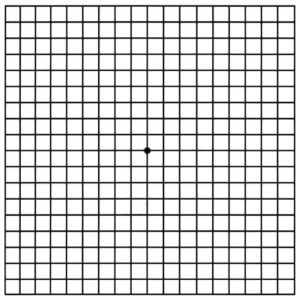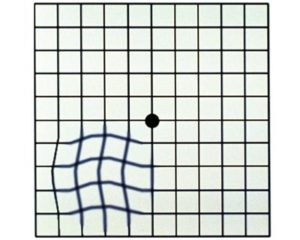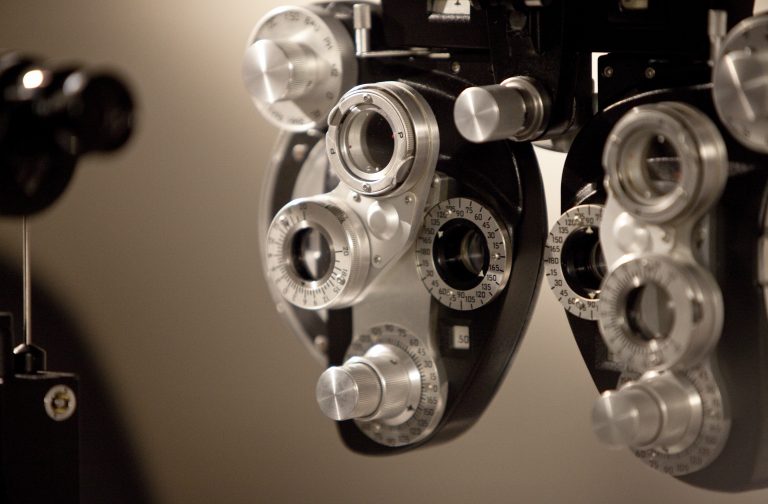Macular Degeneration the Leading Cause of Vision Loss in Older Adults

Macular Degeneration, also called age-related macular degeneration, or AMD, is a deterioration of the macula, the central area of the retina that
controls the sharpness of your vision. Macular degeneration is the leading cause of vision loss among people over 50 years old.
The disease typically is marked by slow, painless loss of central vision, although in rare cases, vision loss can be sudden. Signs of vision loss from AMD include shadowy, wavy or blurred vision. Although peripheral vision will still be normal, because the deteriorating macula is responsible for fine details, AMD will impact your ability to read, recognize faces, drive, watch television, and use a computer.
Your ophthalmologist can detect early signs of macular degeneration before symptoms occur, highlighting the importance of regular eye exams. In the early to intermediate stages of AMD, you will not experience vision loss, but your doctor can diagnose the condition by the presence of yellow protein deposits beneath your retina, called drusen, as well as pigment changes in the retina. A testing tool called an Amsler grid may also be used to identify problem spots in your field of vision that may not otherwise be obvious and indicate a need for further testing. AMD is diagnosed as either “dry” or “wet”. The dry form is more common, accounting for about 80% of people diagnosed. In this form of the disease, aging and thinning of macular tissues, depositing of pigment in the macula, or both, result in the slow loss of central vision. There are currently no FDA-approved treatments for dry AMD however, your ophthalmologist can advise if you may benefit from taking daily vitamin and mineral supplements.
Wet AMD is a less common progression of dry AMD to a more damaging form of the disease. Wet AMD is when abnormal blood vessels grow under the retina and leak blood and other fluid causing scarring that results in irreversible blind spots in central vision. Vision loss is accelerated at this stage of the disease. There are medications administered by a very slender needle that can help treat wet AMD by reducing the number of abnormal blood vessels in the retina as well as slow leaking from blood vessels. Laser surgery may also be used to treat AMD in some patients.
How Can I Protect Myself from AMD?
The best way to protect your eyes from developing AMD is to:
• eat a healthy diet,
• exercise and
• wear sunglasses with UV protection.
Risk Factors for AMD:
- diet high in saturated fat
- overweight
- smoking cigarettes
- over 50 years old
- family history of AMD
- Caucasian (white)
- heart disease
- high cholesterol
Use the grid once a day, every day.


When used correctly, the Amsler grid can show problem spots in your field of vision.
1. Wearing the glasses you normally use to read, hold the grid 12 to 15 inches away from your face in good light.
2. Cover one eye.
3. Look directly at the center dot with your uncovered eye and keep your eye focused on it.
4. While looking directly at the center dot, notice in your side vision if all grid lines look straight or if any lines or areas look blurry, wavy, dark or blank.
5. Follow the same steps with the other eye.
Amsler grid courtesy of aao.org.







 ANNOUNCING UPDATES TO OUR COVID-19 SAFETY PROTOCOLS
ANNOUNCING UPDATES TO OUR COVID-19 SAFETY PROTOCOLS